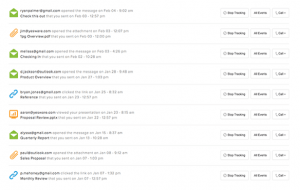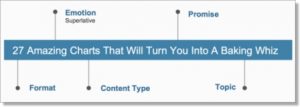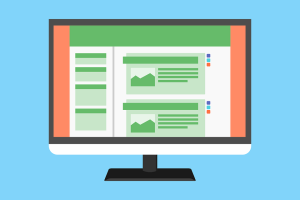The requirements apply across the domain, forcing marketing and sales to work together on email strategy.
This February, Google and Yahoo will begin enforcing new requirements for bulk email senders. The guidelines largely focus on three areas: authentication of outgoing emails, reported spam rates and the ability to easily unsubscribe from email lists.
Google defined bulk senders in an early-October announcement as “those who send more than 5,000 messages to Gmail addresses in one day,” which caught the attention of email marketers in both B2B and B2C circles.
What are the email authentication requirements for bulk senders?
The two companies will require bulk email senders to use what Google calls “well-established best practices” to authenticate the sender. This will close loopholes that can be exploited by attackers, according to Google.
When it comes to email authentication, three mechanisms work together:
- Sender Policy Framework (SPF) helps prevent domain spoofing by allowing senders to identify the email servers that are allowed to send emails from their domain.
- DomainKeys Identified Mail (DKIM) adds a digital signature to outgoing email, which verifies the message was sent by an authorized sender and wasn’t tampered with along the way.
- Domain-based Message Authentication, Reporting and Conformance (DMARC) helps domain owners specify which actions to take when an email fails authentication. It also enables reporting on email authentication results.
Google and Yahoo are requiring bulk senders to set up all three of these mechanisms by February 1st.
What are the reported spam rates for bulk email senders?
Google says bulk senders must keep their reported spam rate (i.e., the percentage of outgoing messages reported as spam by recipients) in Google Postmaster Tools below 0.10% and “avoid ever reaching 0.30% or higher.”
Reporting an email as spam is relatively easy, which sets this requirement apart from authentication and unsubscribe links. It comes down to the value the receiver thinks they get. To some extent, it’s out of the hands of the sender.
Dana Carr, director of email marketing for customer data platform vendor Optimove, recommends a couple of strategies to avoid having legitimate messages flagged as spam. First, pay attention to send times. Many bulk emails are sent at the top or bottom of the hour, which makes it easy for people to report them as spam altogether.
She also suggests using preference centers, which let users dictate the frequency of emails, as well as the categories and products included in the messages. Preference centers not only reduce email volume, but they often increase engagement with emails, Carr said.
What are the ‘unsubscribe’ requirements for bulk senders?
Unsurprisingly, Google is requiring marketing messages and other subscribed messages to support one-click unsubscribe functions.
They should already be table stakes for experienced email marketers, Carr said. Any lingering reluctance to include the feature is a sign of an email strategy focused on quantity over quality.
“The number of people receiving your emails is one number in a group of numbers that can hurt your reputation. That includes not only list size, but open rates,“ Carr said. “At the end of the day, all of these numbers are hurting your engagement metrics. Instead of thinking about list size, we need to think about segmentation and targeted content.”
How concerned should email marketers be about these requirements?
Most experienced email marketers will look at these requirements and say, “Check. Check. Check.”
Carr believes senders who understand authentication and good email practices shouldn’t be overly concerned, “I don’t think they have anything more to worry about in February than they do now.”
But there’s a catch.
The requirements apply at the domain level, which means they apply to all of the emails sent by the organization using the domain, not just marketing. That includes sales teams, particularly, business development representatives and sales development representatives that often rely heavily on outbound cold email tactics.
Armed with generative AI tools and sales engagement platforms (e.g., Salesloft and Outreach), these teams are capable of generating a high volume of email.
These roles don’t always report to marketing, either, and likely aren’t familiar with email authentication requirements. That sets up a turf battle of sorts for marketers trying to protect their email strategy.
“It is generally marketing that controls the authentication,” said Ryan Phelan co-founder of digital marketing services company RPEOrigin.com and a MarTech contributor. “This is where a good partnership between sales and marketing is critical.”
Carr also thinks marketing should take the lead on authentication and good email practices throughout the organization. “Marketing should be aware of the sending domain for messages,” she said. “Some people will get this confused with the website domain.”
Marketing should also be advising the team managing the authentication, Carr said, because any change at the DNS level could cause a serious problem.
Why are there new requirements for bulk senders?
Spam is a significant problem. Most people don’t realize the breadth of the issue because the vast majority of spam messages are blocked before they reach the inbox. Spam is also a security threat, and when it reaches the inboxes of users in certain corporations or government agencies, it’s potentially a very serious security threat.
But ridding the world of spam is only part of the motivation here.
“The inbox is a revenue source,” said Phelan. “The ads at the top of the inbox. The ads in the mobile app. It’s a hook into the data mart for Google.”
Google has, for years, taken steps to protect its revenue source, including adding tabs to sort out promotional and social emails in Gmail. Phelan believes the latest moves are another way to address the problem. The natural reaction, he said, is to filter out the noise by using tactics like authentication to help decide who reaches the inbox.
Carr agrees that the move has a lot to do with keeping the inbox central to people’s daily activities. “[Google is] not foolish,” she said. “They know more and more customers are choosing other channels, including SMS and in-app messaging. This is like parents saying, ‘I gave you three chances.’”
What about Google Workspace inboxes?
Google Workspace inboxes are email accounts managed by businesses or educational institutions that reside on Google servers. There’s been a lot of discussion on social media about the impact of the new requirements on outbound cold sales emails. If this doesn’t apply to business email addresses on Google Workspace accounts, many outbound sales reps would sleep easier.
Some observers have noted that the requirements from Google specifically reference “Gmail addresses,” leading to speculation that Workspace accounts would be spared. To date, Google has not clarified whether that is the case.
The post New rules for bulk email senders from Google, Yahoo: What you need to know appeared first on MarTech.
MarTech(3)








